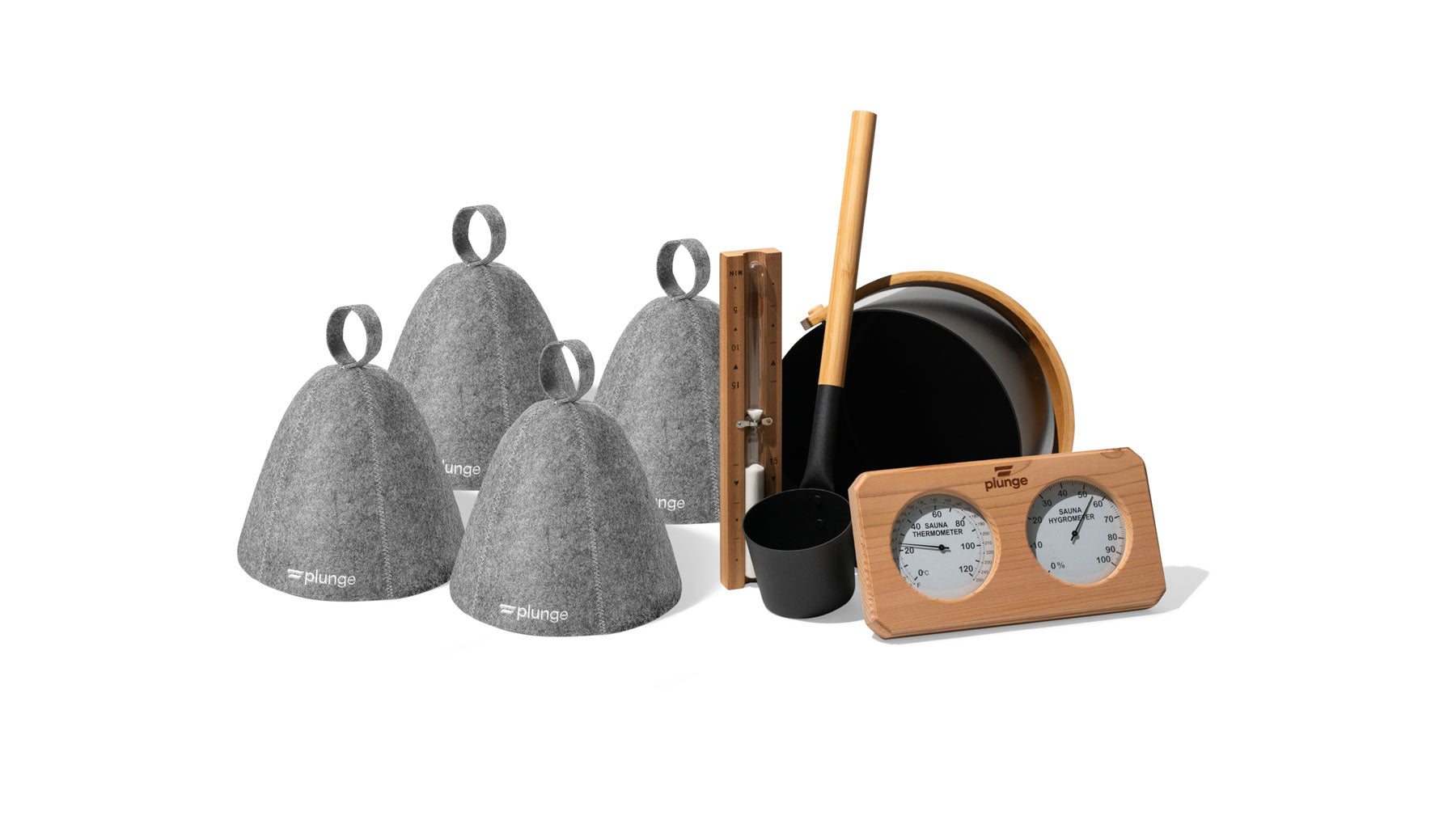
Sauna Temperature: How Hot Should a Sauna Be for Health Benefits?
The ideal sauna temperature generally ranges from 150°F to 195°F, depending on individual preferences and the type of sauna. Traditional Finnish saunas typically operate at higher temperatures, while infrared saunas can offer the same health benefits at lower heat levels.
Finding the right balance is essential to maximize health benefits while ensuring comfort and safety. Keep reading to learn what you need to know about the best temperature for your sauna sessions!
How Hot is a Sauna?
Saunas are celebrated for their intense heat, but the specific temperature can vary significantly. In general, saunas tend to range from 150°F to 195°F. However, the specific temperature depends on the type of sauna you’re using. Traditional dry saunas (often heated with electric or wood-burning stoves) typically operate within this temperature range. These saunas rely on dry heat to warm the air, raising your body temperature and stimulating circulation.
The high heat is coupled with low humidity (usually around 10-20%), which can make these higher temperatures feel more tolerable. The hot air transfers heat to your body through convection, raising your core body temperature and providing a thorough, warming experience. For example, a 180°F dry sauna may feel more tolerable than a 150°F steam room, where high moisture content can intensify the sensation of heat.
Conversely, infrared saunas operate at more moderate temperatures of 120°F to 140°F. Despite these lower readings, infrared saunas provide effective heat therapy by directly warming the body rather than the surrounding air. This results in a deep, penetrating warmth that can be just as, if not more impactful as found in hotter traditional saunas.
How Hot Do Saunas Get?
The upper limits of sauna temperatures can be quite extreme. Some saunas can reach an impressive 230°F! At these temperatures, the experience can be overwhelming and should only be attempted by seasoned sauna users under careful supervision.
For safety and comfort, we advise most sauna users to stay within the 150°F to 180°F range, but seasoned enthusiasts may push towards the upper end of the spectrum. As for infrared saunas, their upper limit typically caps around 150°F. Despite the lower air temperature, the heat transfer method in infrared saunas allows for a deep and intense warming sensation that mirrors the benefits of higher-heat traditional saunas.
How Hot Should a Sauna Be for Beginners?
For those new to sauna use, it's best to start with lower temperatures. A recommended range for beginners is between 140°F and 150°F. While this may seem less intense to seasoned users, it provides ample heat for newcomers to experience the benefits without discomfort.
With that being said, during these initial sessions, limit your time to five to ten minutes. As you get used to the heat, you can gradually increase both temperature and duration. Always listen to your body; if you experience dizziness or discomfort, it's essential to exit the sauna and cool down. As a reminder, sauna use should prioritize relaxation and health benefits rather than endurance.
What’s the Best Sauna Temperature for Health Benefits?
While sauna bathing has been a popular practice for centuries and the health benefits are very well researched and proven, the exact “best” temperature for maximizing these benefits remains a topic of interest and research.
That being said, to maximize the health benefits of a sauna session, we find temperatures between 160°F and 175°F to be most effective for traditional saunas. For infrared saunas, the ideal temperature for health benefits ranges from 130°F to 145°F. At these levels, you’ll experience a variety of positive effects, including:
- Improved circulation: The heat causes your blood vessels to dilate, increasing blood flow and oxygenation.
- Detoxification: Sweating helps your body expel toxins and improve skin health.
- Muscle recovery: The warmth helps loosen stiff muscles and alleviate soreness, making it a great post-workout recovery tool.
- Boosted cardiovascular health: The increased heart rate from sauna sessions mimics light cardio, helping to improve heart function over time.
Learn more about the health benefits of saunas here.
Find Your Ideal Sauna Temperature with Plunge!
Ultimately, the best sauna temperature is one that allows you to comfortably sustain a session lasting 15-20 minutes while enjoying its health benefits. For some individuals, this may mean embracing the intensity of a traditional sauna at 195°F; for others, a gentler infrared experience at around 130°F may be preferable. Consistency and attentiveness to your body's signals are key.
Are you ready to embark on your sauna journey? Experience the benefits of heat therapy with our at-home personal saunas! Perfect for unwinding before bedtime or accommodating up to seven friends (or hot yoga sessions), our saunas can reach temperatures up to 230°F—catering to everyone from beginners to seasoned users seeking an upgrade. Explore our Standard and XL saunas today!























